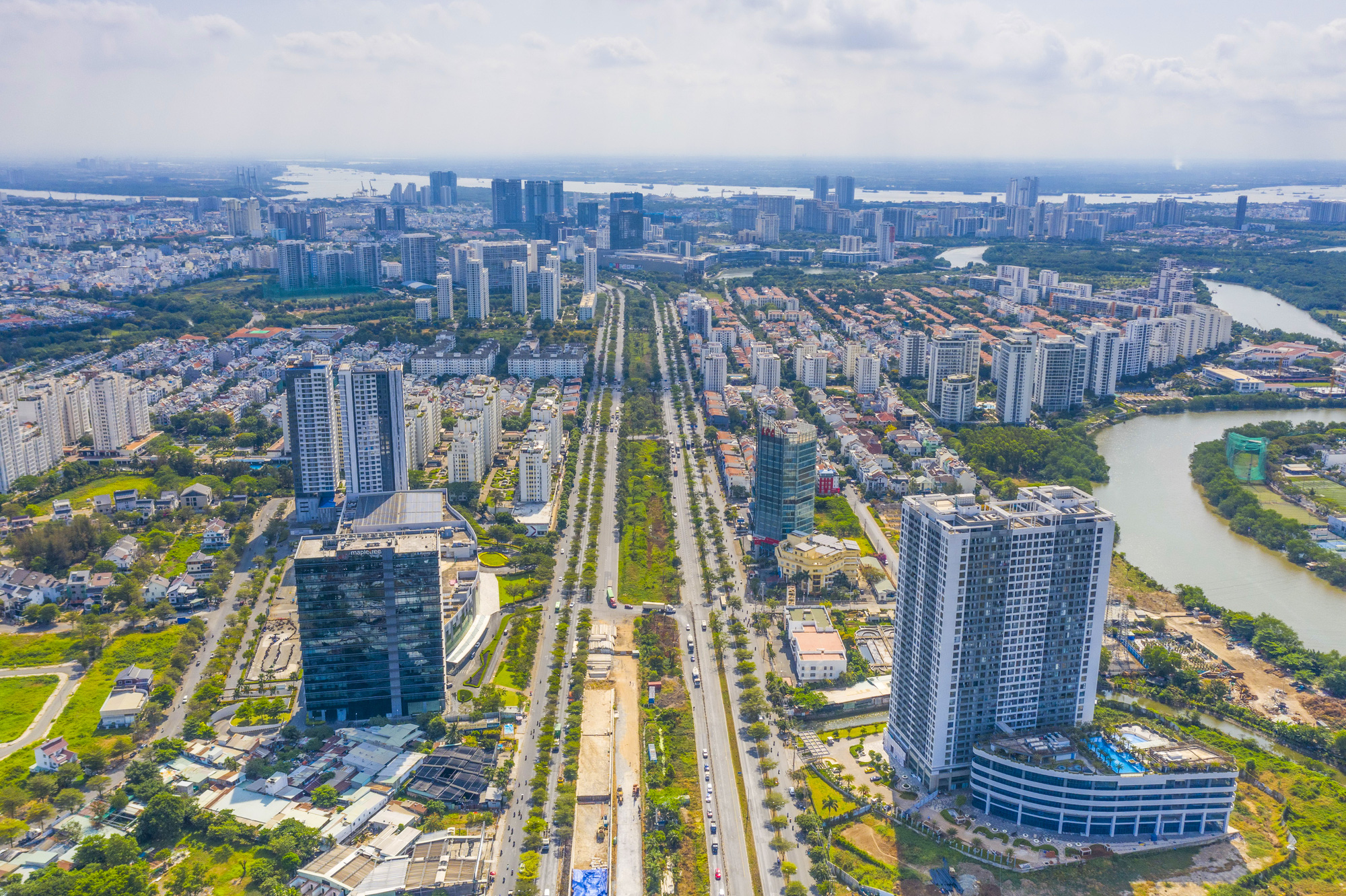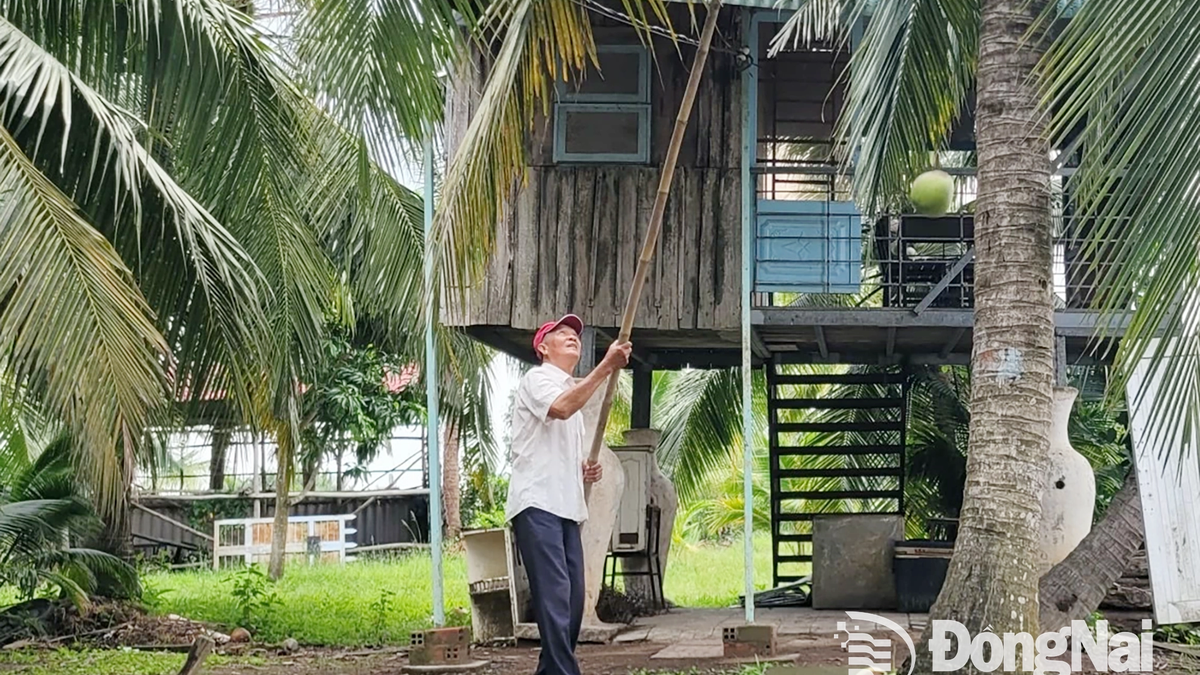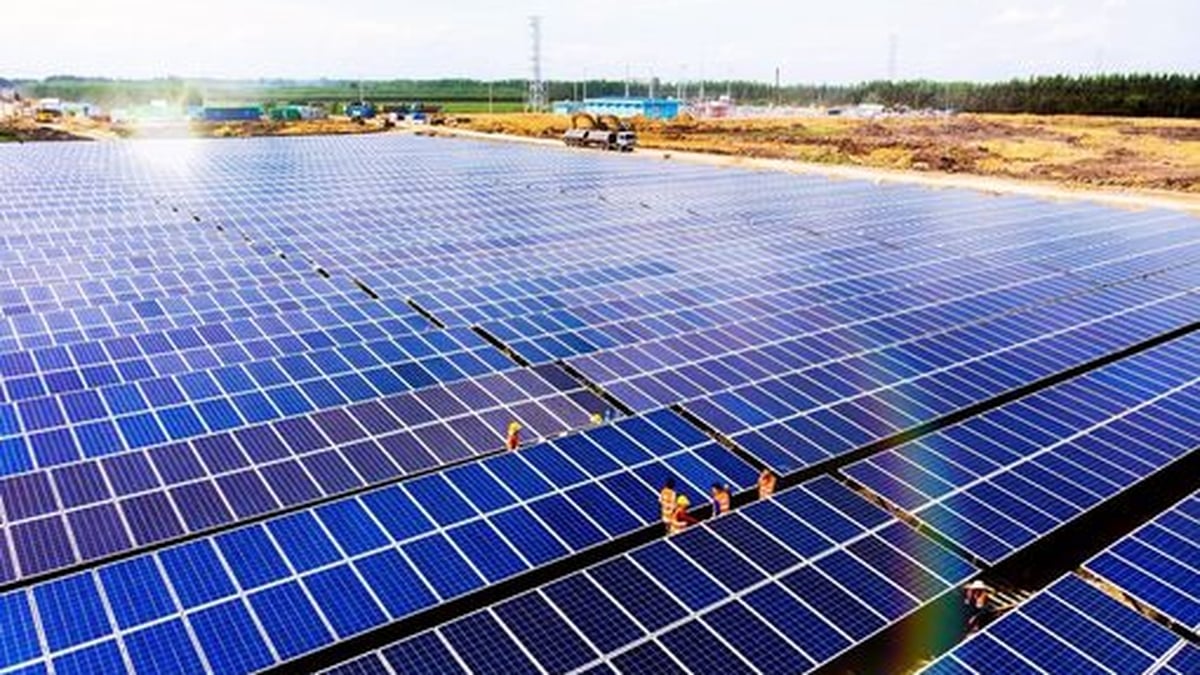
Real estate is one of the areas where capital is concentrated when banks increase credit growth - Photo: QUANG DINH
Statistics based on the 2024 semi-annual financial reports of 27 listed banks show that only one bank recorded negative customer loan growth at the end of June 2024, the rest were positive.
How do banks lend?
The rare bank that "went backwards" was ABBank (ABB) with a rate of -7.2%.
On the contrary, there are 9 banks with double-digit growth in customer loan balance, including LPBank (LPB), HDBank (HDB), Techcombank (TCB), ACB , NCB (NVB), MSB, Nam A Bank (NAB), Vietbank (VBB), MBBank (MBB).
Of which, NCB ranked first in customer loan growth rate with 16%, reaching more than 64,198 billion VND at the end of June 2024.
Next is LPBank with outstanding customer loans at the end of the second quarter of 2024 reaching VND 317,394 billion, an increase of 15.2% over the beginning of the year.
At HDB, with a 12.5% increase in customer loans in the first half of the year, the bank's outstanding loans are at VND386,186 billion.
Real estate business accounts for the second highest proportion in HDB's loan structure, reaching more than VND 60,654 billion, an increase of more than 4%.
Meanwhile, credit for wholesale and retail, auto and motorbike repair and construction activities grew strongly, by 28% and 45% respectively compared to the beginning of the year.
Looking at the data, another notable feature is the presence of small banks such as NVB, NAB and VBB in the high credit growth group.
In the financial report, NVB did not explain in detail the outstanding loans by industry, but NAB and VBB both have in common that the outstanding loans increased significantly in the real estate sector.
Specifically, outstanding loans for the real estate business sector have the second highest proportion at VBB, reaching VND 20,050 billion, up 25%.
After the past half year, the proportion of credit poured into this sector out of total credit also increased from 19.8% to 22.5% at VBB.
Credit growth at banks - Data: WiGroup
At NAB, outstanding loans for real estate business activities also increased from VND12,802 billion to VND16,849 billion after 6 months, an increase of nearly 32%. Meanwhile, credit to some sectors at NAB decreased slightly such as agriculture, forestry and fisheries...
Meanwhile, state-owned banks have a rather modest credit growth rate of about 6-8%.
According to data from the State Bank, credit growth in the first 6 months of 2024 reached 6.1%, equivalent to outstanding debt of more than 14.29 million billion VND.
The increase of more than 6% is recorded to contribute mainly in the second quarter of 2024.
Signals recovery in loan demand
According to Fiinratings experts, credit growth at banks accelerated since June, signaling a recovery in loan demand.
"Credit growth is faster partly because the State Bank issued a warning to transfer credit room between banks so that banks with the ability can use it more effectively," said Fiinratings experts.
Accordingly, this coordination move will make banks speed up in finding customers and disbursing loans, creating growth momentum in the coming months.
However, should we try to achieve the credit growth target?
Answering this question, VPBanks experts said that credit growth of 14-15% is a big challenge because Vietnam's credit/GDP ratio is currently high.
Furthermore, when credit growth is considered a criterion to evaluate banks and serve as a basis for assigning credit "room" for the following year, it will also indirectly cause banks to try to push out all credit room.
"When growth has to compromise on asset quality, that growth is not sustainable, which can lead to economic instability, high inflationary pressure and more difficult-to-handle bad debt problems," VPBanks experts worry.
While Vietnam's credit to GDP ratio is approaching that of developed countries such as Australia, China, Thailand, and is much higher than that of countries with similar economies such as Indonesia or the Philippines.
Not to mention, credit is mainly driven by the real estate industry. Outstanding loans at the end of the second quarter of 2024 reached more than VND3,083 trillion, up 6.8% compared to the beginning of the year, accounting for 21.4% of total outstanding credit in the entire economy. This is the most important sector of the banking system, according to VPBanks experts.
However, this market growth may not be sustainable, posing risks if asset values decline.
In addition, real estate loans are long-term, which can tie up capital and limit banks' ability to pursue other profitable opportunities, in addition to advantages such as high demand and strong collateral, according to VPBanks.
Home loan interest rates fall, but lending in this sector remains sluggish
Visrating (a credit rating agency) analysts said large private banks benefited the most from higher credit growth.
Of which, TCB, HDB, VPB, LPB recorded loan growth higher than the industry average of 7.7% in the first 6 months of this year, led by lending to corporate customers in real estate, trade and manufacturing related fields.
In contrast, profits of retail-focused banks such as VIB and OCB declined due to poor home loan growth, lower investment income and higher provisioning costs.
VPBank also said that although home loan interest rates have decreased positively over the past year, because housing prices are still high compared to income and the banking industry needs resources to handle bad debt, the disbursement situation for home loans is not really positive.
Source: https://tuoitre.vn/tin-dung-tang-dot-bien-o-nhieu-ngan-hang-tien-chay-manh-vao-dau-20240823211426566.htm


































































































Comment (0)